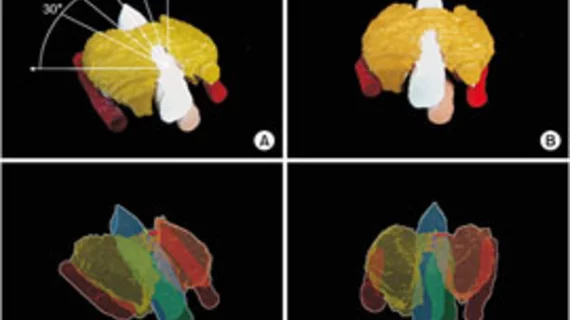South Korean researchers have developed a technique that may enhance the safety of robotic thyroidectomy procedures by overlaying augmented reality (AR) models based on CT images onto patients during surgical intervention, according to research published in the December issue of Annals of Surgical Treatment and Research.
Robotic surgery comes with an increased risk of complications because of an already limited operative view. It can be especially challenging for inexperienced surgeons with insufficient training along with its associated high costs.
However, the technique may improve surgical safety by helping surgeons see anatomical structures more clearly and better identify structures covered or hidden by surrounding tissue—ultimately improving surgical safety.
For their study, the researchers created AR images of the thyroid gland, common carotid arteries, trachea and esophagus using preoperative CT images from a 45-year-old female patient diagnosed with papillary thyroid carcinoma.
The AR images were then overlaid on a three-dimensional (3D) printed model at five different angles for accuracy using Dice similarity coefficient, according to the researchers. Lastly, the generated AR images were superimposed onto the real-time operative view during the robotic thyroidectomy procedure.
The team was able to successfully overlay the AR images by using manual registration during the entire procedure, the researchers wrote. The Dice similarity coefficients ranged from 0.984 to 0.9908, and the mean of the five different angles was 0.987.
The team noted, however, that AR in robotic surgery does contain technical barriers, including difficulty recognizing anatomical landmarks which are essential for overlaying AR images on top of the target organs. Additionally, overlaying AR images on deformable organs such as the kidney could become separated from the operative image when deformity occurs and cause further complications, according to the researchers.
“Although current AR in robotic thyroidectomy has limited clinical applicability due to technical and commercial limitations, AR in robotic surgery has several advantages that may enhance surgical safety,” the team concluded.

